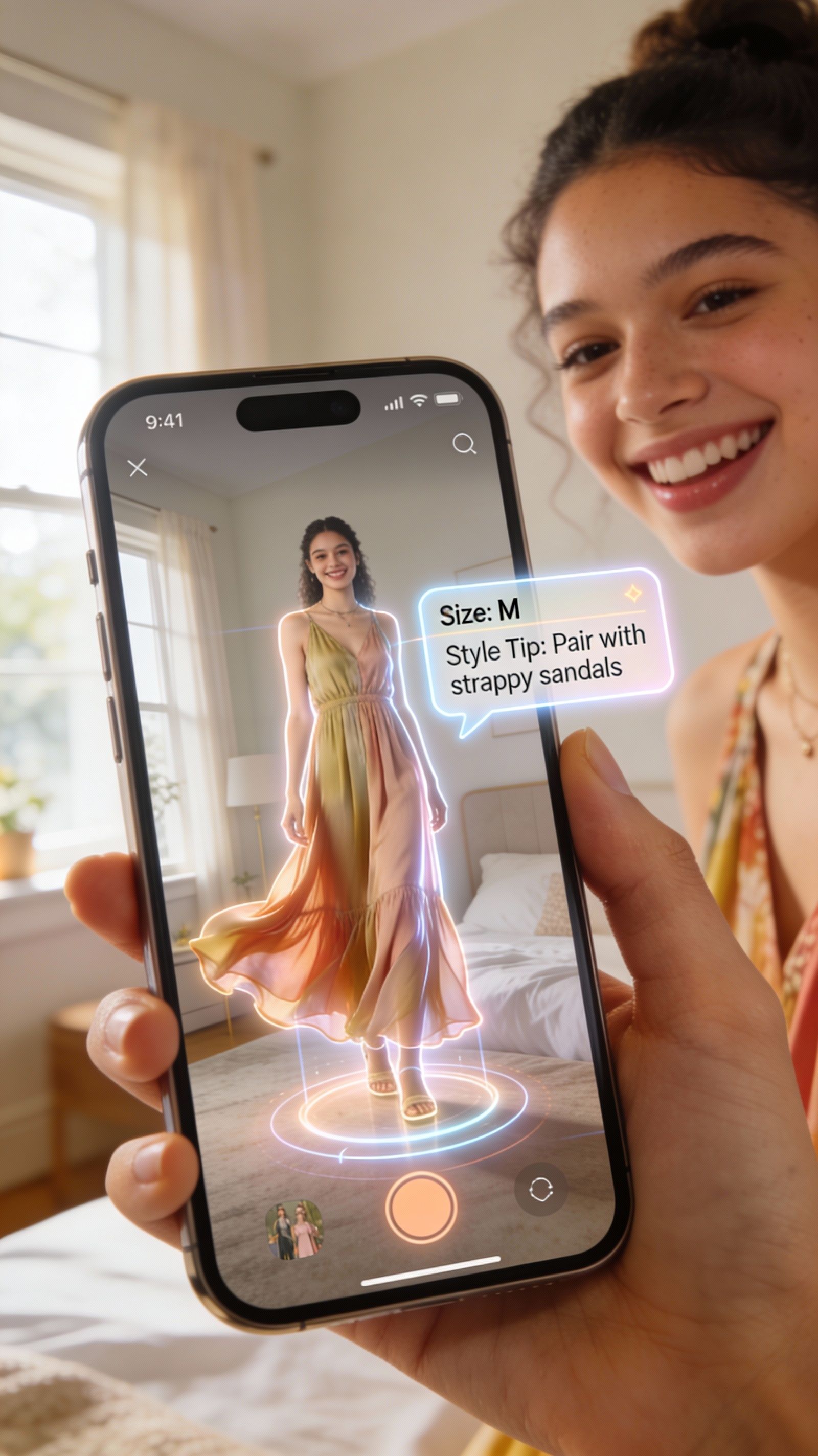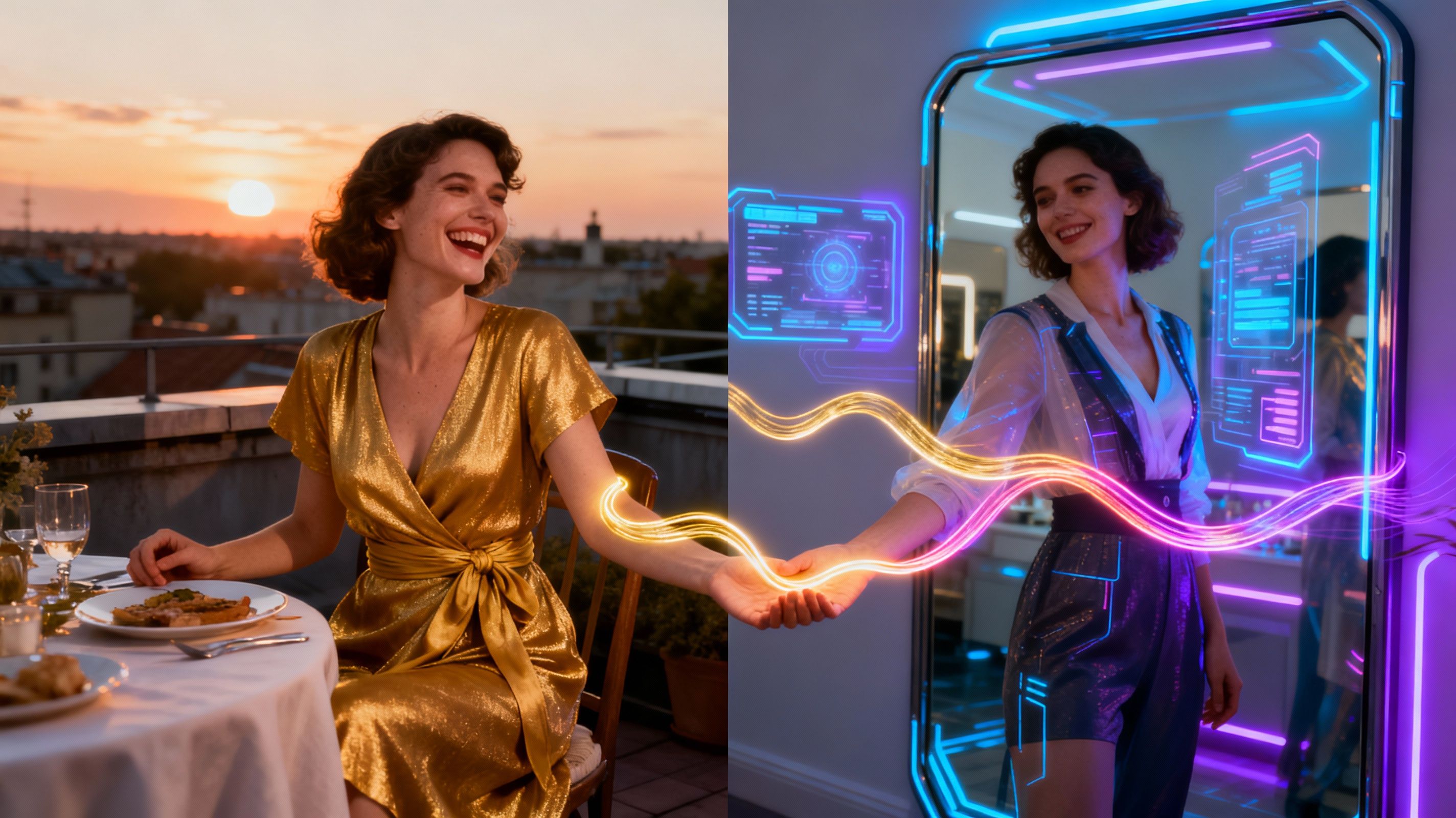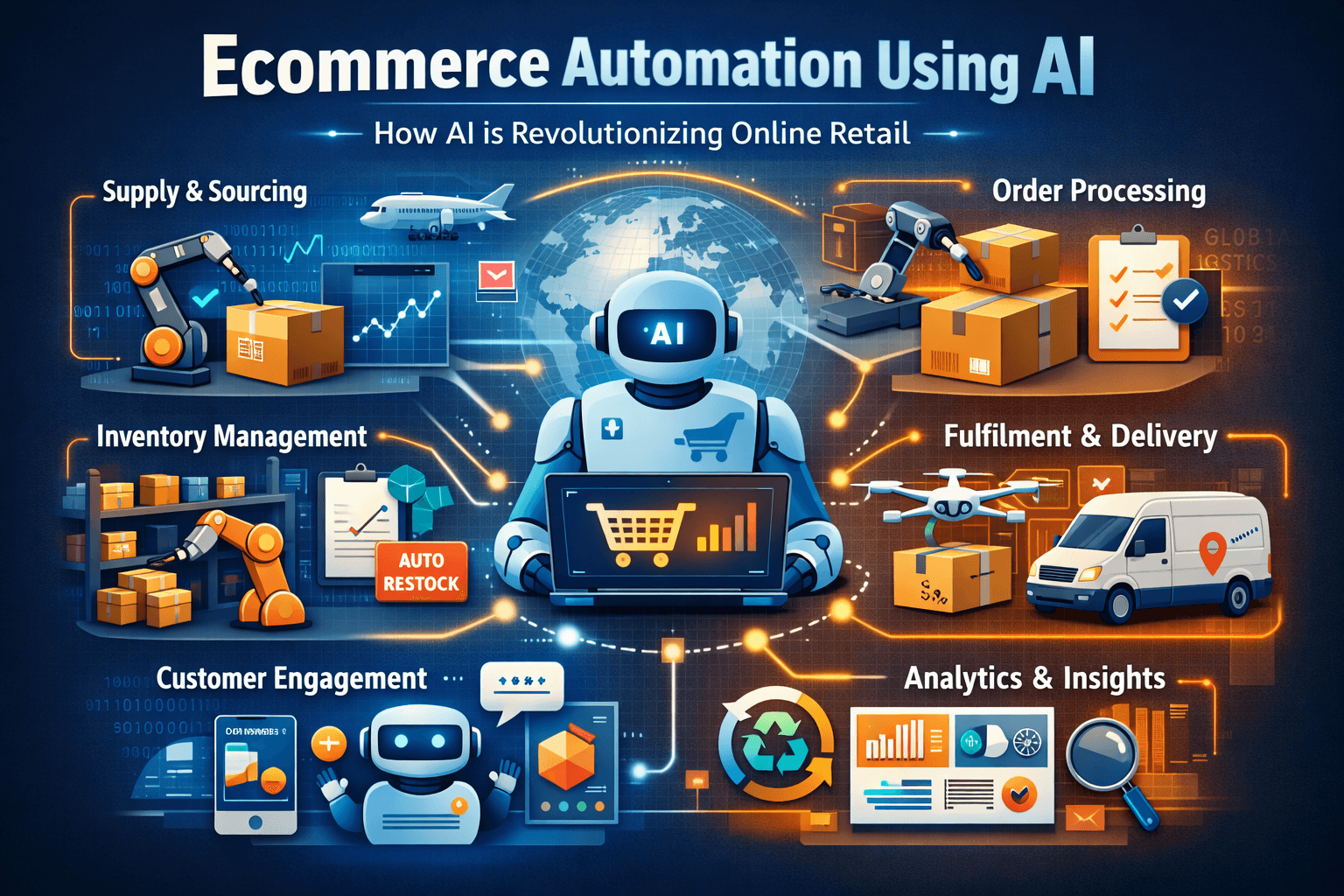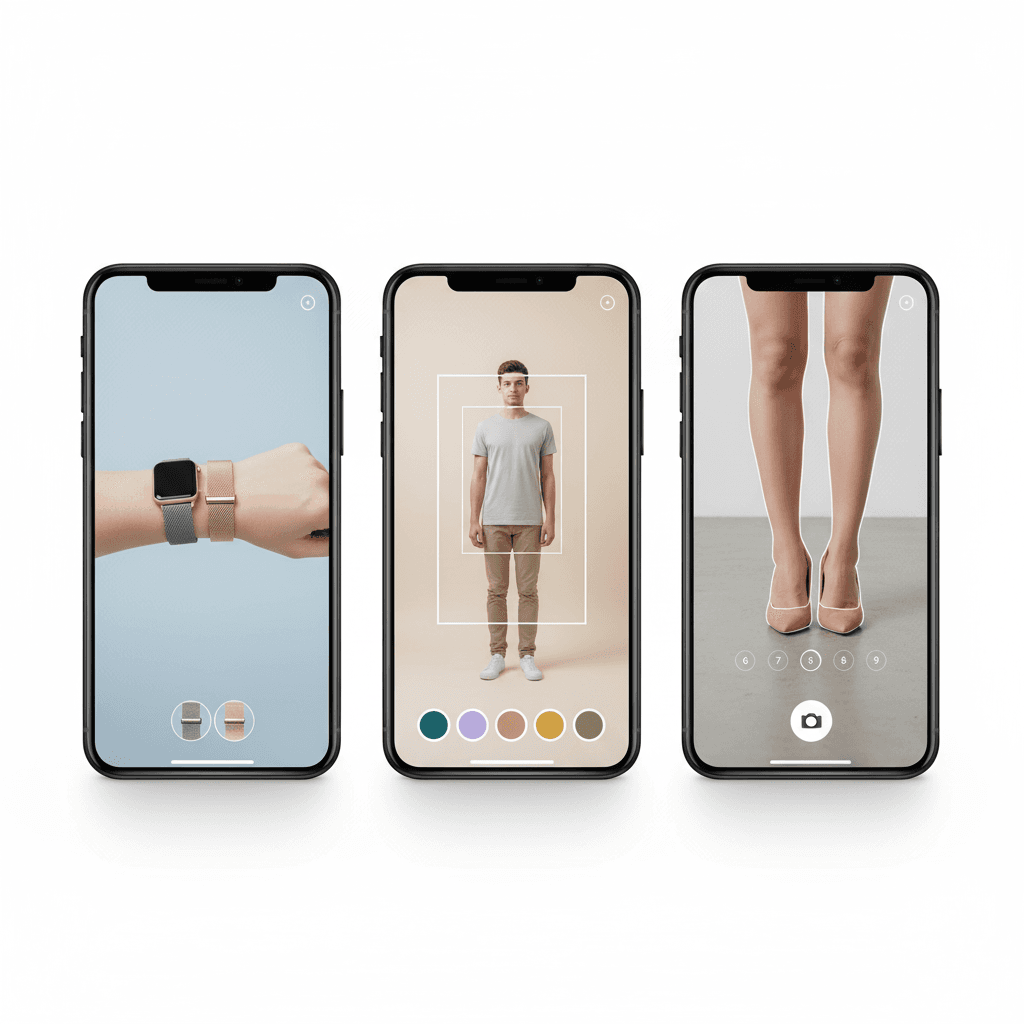How Augmented Reality Retail Shopping Is Changing Fashion?
What Is an AI Stylist, and How It’s Changing Fashion Forever


Fashion isn’t just about fabric—it’s about identity, expression, and evolution. In 2025, as personalization becomes the new luxury, AI stylists are stepping in as game-changers. These intelligent systems go beyond mere outfit suggestions. They decode your intent, understand your body type, learn your preferences, and serve up looks that feel uniquely you—without needing hours of scrolling or guesswork.
From decoding your mood to predicting what colors or cuts you'll gravitate toward, AI stylists for men, women, and beyond gender are blending emotional intelligence with computing power. Whether you're prepping for a last-minute dinner date, planning your summer wardrobe, or exploring new aesthetics, these digital stylists offer solutions at the speed of thought.
In this blog, we’ll break down what AI stylists are, how they work, the tech behind them, and why they’re not just replacing personal shoppers—they’re redefining the future of fashion.
What Is an AI Stylist?
At its core, an AI stylist is a digital fashion assistant powered by artificial intelligence and machine learning. It provides personalized clothing and style recommendations based on your preferences, body shape, lifestyle, past purchases, and even social media activity.
But it’s not just about selecting random pieces. An AI stylist processes data such as your:
- Fit and sizing details
- Favorite colors, cuts, and fabrics
- Brands you love
- Occasions (e.g., work, date night, vacation)
- Mood, seasonality, and regional trends
The result? Tailored, wearable outfit recommendations that feel intuitive and personalized.
AI stylists reduce decision fatigue, eliminate trial-and-error shopping, and unlock new ways to explore your personal style—all in a few clicks. They’re fast, scalable, and always learning, making them more effective with every interaction.
This isn’t a gimmick. It’s fashion built on data, designed around you.
The Technology Behind AI Stylists

So how does an AI stylist really work behind the scenes? It’s a blend of advanced technologies that mimic—and in some cases, exceed—the intuition of a human stylist.
Let’s break down the core components:
1. Natural Language Processing (NLP)
AI stylists can understand prompts like “outfit for a beach wedding” or “something casual but cute for brunch.” They parse the occasion, your tone, and even the implied dress code to tailor recommendations.
2. Computer Vision
Visual AI helps recognize color, texture, patterns, and outfit structure. It powers features like image-based search (e.g., “find me this dress I saw on Instagram”) and moodboards.
3. Machine Learning
Each interaction trains the system further—learning what you reject or favor, what fits well, and what you’re most likely to buy. It adapts based on behavior patterns over time.
4. Real-Time Inventory Integration
Unlike static recommendations, AI stylists connect to live product inventories. That means no more “sold out” heartbreak—only in-stock, shoppable looks.
5. Augmented Reality (AR)
AI stylists now integrate AR-based try-ons—allowing you to virtually see how shoes, makeup, hairstyles, or outfits look on you before buying. (Example: NewBlack for clothing try-ons)
These technologies make style suggestions smarter, faster, and visually intuitive—bringing digital fashion curation to your fingertips.
How AI Stylists are Used in Fashion Industries?

AI stylists are no longer just experimental tools—they’ve quietly become the backbone of many fashion-forward platforms and retail ecosystems. From e-commerce giants to emerging fashion apps, here’s where AI styling tech is making waves:
1. Fashion Retail Platforms
Major retailers like Amazon, Zara, and ASOS use AI to recommend items based on browsing behavior, size preferences, and what similar users have purchased. These platforms personalize your feed to reflect your style in real time.
2. Subscription Styling Services
Services like Stitch Fix and Thread are pioneers in AI-human hybrid styling. Their systems pre-select outfits using algorithms, which human stylists then refine—ensuring scale without sacrificing personal touch.
3. Virtual Personal Styling Apps
Platforms like Fashable, YesPlz, and StyleDNA act as your AI personal shopper—offering daily outfit suggestions based on weather, occasion, and mood. Some, like YesPlz, even allow you to swipe through styling combinations Tinder-style.
4. Visual Search & Inspiration Apps
Pinterest and platforms like ShopLook or ShopStyle use AI to convert your inspiration images into real, shoppable outfits—using computer vision to find matching patterns and silhouettes.
5. AR Try-On Experiences
Retailers such as Nike, Warby Parker, and Sephora have integrated AR with AI to allow users to try on shoes, glasses, or makeup virtually—bridging styling with functionality and fit.
AI stylists are being used wherever fashion meets decision-making. Whether you’re browsing on mobile, using a smart mirror in a retail store, or getting daily lookbooks via email—there’s likely an AI engine working behind the scenes.
Top AI Stylist Platforms in the USA
AI stylists are not only reshaping how we shop—they're also becoming household names. From algorithm-powered suggestions to real-time outfit curation, these U.S.-based platforms are leading the AI fashion movement:
1. Stitch Fix
One of the earliest adopters of AI in personal styling, Stitch Fix combines powerful algorithms with human stylist input. The system evaluates user preferences, fit data, and style profiles to deliver curated “Fixes”—five personalized pieces shipped to your doorstep. Its recommendation engine gets smarter with every return and review.
2. Thread
Thread’s AI engine helps men and women build cohesive wardrobes with the guidance of machine learning and stylists. It’s known for combining AI suggestions with feedback from real style experts, ensuring outfits are both data-informed and wearable.
3. Fashable
Fashable uses generative AI to help users visualize looks based on their body type, preferred silhouettes, and even current fashion trends. You can describe an outfit in natural language and get styled in seconds—a leap toward conversational shopping.
4. The Yes (acquired by Pinterest)
Built as a fully AI-driven shopping experience, The Yes matched users with products using a dynamic decision-making engine. Though acquired by Pinterest, its personalization engine continues to inform visual-based fashion discovery across Pinterest’s ecosystem.
5. ShopWithAI (Emerging)
An emerging name, ShopWithAI allows users to upload a photo or describe an event (like “wedding guest outfit in Miami”) and receive full outfit suggestions, links to buy, and even budget-based filters.
These platforms highlight the diversity of AI stylists in the market—from subscription-based services to prompt-based lookbooks—all focused on one goal: making fashion easier, smarter, and more enjoyable.
How Do AI Stylists Work? Step-by-Step Breakdown

AI stylists might feel like magic—but behind the curtain, it’s a sophisticated blend of data science, machine learning, and fashion intelligence. Here’s a closer look at how these digital stylists operate:
1. Data Collection & Profiling
It all starts with you. AI stylists collect data through quizzes, browsing behavior, past purchases, uploads (like selfies), and even your mood or lifestyle inputs. Platforms like Stitch Fix ask about your preferred colors, fit, occasions, and budget—building a highly detailed fashion profile.
2. Deep Learning & Natural Language Processing
Once your data is collected, AI systems use deep learning algorithms and NLP to understand what you actually mean when you say “chic but comfortable” or “clean girl aesthetic.” These models are trained on millions of fashion images, product tags, and user reviews to recognize patterns and preferences.
3. Real-Time Outfit Generation
AI stylists assemble entire looks using recommendation engines, visual similarity models, and trend forecasting tools. These engines factor in:
- Your size and fit preferences
- Current weather and season
- Local fashion trends
- Real-time inventory availability
This helps prevent “out-of-stock” disappointments and ensures suggestions are relevant and actionable.
4. Visual Rendering with AR or AI Avatars
Advanced platforms integrate with AR (augmented reality) or AI-generated avatars to show how an outfit might look on you. Some let you upload a photo or build a 3D twin—this enhances confidence and helps avoid return hassles.
5. Continuous Learning & Feedback Loops
The more you engage, the smarter your AI stylist becomes. Every time you like, skip, or purchase an item, the algorithm recalibrates—improving future recommendations and evolving with your taste.
In short, AI stylists blend data, fashion logic, and personalization at scale—offering a service that’s faster, more adaptive, and far more accessible than traditional human styling.
The Role of AI Stylists in Fashion: How It’s Changing Everything

Did you know? Visual AI stylists can create outfit recommendations 5 to 10 times faster than human stylists, assembling looks in milliseconds that would take humans 20 minutes or more.
Yes, you heard it right. The AI stylists play a huge role in the fashion industry.
1. Personalization at Scale
Fashion has always thrived on individuality. But until now, true personalization was reserved for VIP customers or high-end stylist services. AI stylists democratize this by offering one-on-one outfit recommendations to millions of users—instantly and affordably. Whether you prefer boho, minimalism, or streetwear, AI stylists adapt to your unique body type, preferences, and lifestyle.
Platforms like Stitch Fix use hybrid AI + human models, where algorithms create initial picks, and human stylists refine them—resulting in an 80% improvement in customer satisfaction.
2. Smart Inventory Pairing
Retailers lose millions due to inventory mismatches—wrong size, wrong color, wrong region. AI stylists eliminate this by recommending outfits that are not just stylish but available, localized, and relevant. These systems link backend inventory data with front-end styling logic, reducing returns and improving conversion rates.
3. Intent-Driven Styling
Unlike traditional eCommerce filters (“blue dress,” “size M”), AI stylists understand intent. When a shopper says, “I need something for a beach wedding,” the AI parses context—event type, climate, formality—and serves tailored results. It’s shopping guided by meaning, not just keywords.
4. Predicting Fashion Trends
AI stylists don’t just respond to trends—they anticipate them. By analyzing social media sentiment, runway photos, influencer posts, and sales velocity, AI systems help brands design collections that align with real consumer demand. This significantly reduces overproduction and waste.
McKinsey reports that brands using AI forecasting tools reduce forecasting errors by up to 50% and shrink excess inventory by 20-30%.
5. Omnichannel Styling
AI stylists work across channels—mobile apps, smart mirrors in stores, and even voice assistants. Whether you’re shopping via your smart TV or interacting with your AI Twin on your lock screen (as with Glance), styling becomes a seamless part of your digital ecosystem.
6. Enabling Sustainable Fashion
AI stylists are also making fashion more sustainable. By suggesting outfits that can be mixed and matched or reused for multiple events, they help users buy more intentionally. Some platforms even use AI to help users shop secondhand or upcycled fashion.
This way, AI stylists are not just changing how we dress—they’re rewriting the rules of fashion retail. From personalized recommendations and trend forecasting to more sustainable consumption and better inventory efficiency, the impact is sweeping and irreversible.
Glance: More Than an AI Stylist for Your Personal Look
While traditional AI stylists focus on assembling outfits, Glance goes several steps further—redefining how you experience fashion in real time, across screens, and in sync with your intent.
Here’s how Glance stands apart from typical AI stylists:
1. AI Twins That Mirror Your Style DNA
Glance doesn’t just recommend outfits. It builds a digital version of you. The AI Twin understands your body shape, skin tone, preferences, and context—whether you're dressing for a brunch, a business pitch, or a night out. Unlike generic AI stylists, it offers highly nuanced suggestions tailored to your mood, event, and identity.
2. Multi-Screen Styling for Your Real-Life Moments
Most AI stylists live inside an app. Glance lives where your attention is—on your lock screen, smart TV, or even on an app. That means styling becomes a passive, intuitive part of your digital routine. You're not searching for outfits; they're coming to you based on your behavior, weather, and even current wardrobe.
3. Context-Aware Nudges
Whether it’s July 4th or a rainy Monday, Glance considers context. The system understands calendar events, local weather, and lifestyle routines, nudging you with relevant outfit inspirations and ready-to-buy looks at the right time—without disrupting your flow.
4. Shoppable Moments, Seamlessly Delivered
With Glance, discovering a new style isn’t where the journey ends—it’s where it begins. You can shop complete looks instantly, see how they appear on your AI Twin, and even share them with friends for instant feedback.
In short: Glance transforms how you live fashion—blending personalization, convenience, and self-expression in a way that no standard styling tool can.
Conclusion
The rise of AI stylists signals more than just a technological shift—it’s a cultural evolution in how we interact with fashion. From understanding body types and lifestyle needs to syncing with your mood and occasion, AI styling is becoming deeply intuitive, fast, and hyper-personalized.
And while many platforms stop at recommendations, Glance elevates the experience by transforming your entire fashion journey into an intelligent, real-time, multi-screen experience.
As AI continues to reshape retail, shopping will no longer begin in stores or apps—but on your lock screen, in your living room, or even through a casual scroll.
Glance isn’t just part of this future. It’s defining it.
FAQs Related to AI Stylists
What is an AI stylist?
An AI stylist uses machine learning and data analysis to recommend outfits tailored to your body type, preferences, and lifestyle in real time.
Can ChatGPT be a fashion stylist?
Yes, platforms have integrated ChatGPT to serve as a conversational stylist, offering outfit suggestions through natural prompts. However, it’s still evolving in personalization depth.
What is the best free AI stylist app?
Options like Fashable, Style DNA, and Glance offer AI-based styling features—Glance stands out for real-time, multi-screen personalization beyond just outfit curation.
Can AI replace a hairstylist?
While AI tools can offer haircut suggestions based on face shape, lighting, and trends, they can’t replicate the hands-on skill of a professional hairstylist—yet.
Can AI style my hair virtually?
Yes. AI virtual try-on tools can simulate how various hairstyles, colors, and cuts would look on your face, helping you preview styles before visiting a salon.
Where are AI stylists being used?
AI stylists are integrated into fashion apps, ecommerce platforms, digital mirrors in stores, and even smart TVs—making style suggestions contextually and in real time.
Is Glance an AI stylist?
Glance is more than that—it’s an intelligent, lifestyle-aware fashion system that personalizes your look across screens, moments, and moods.






